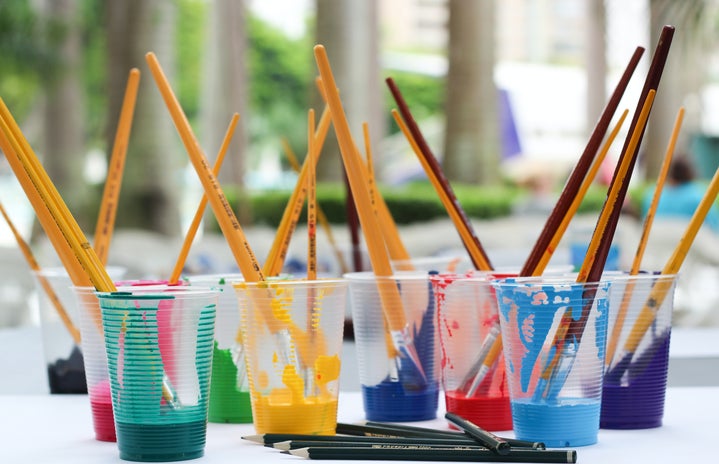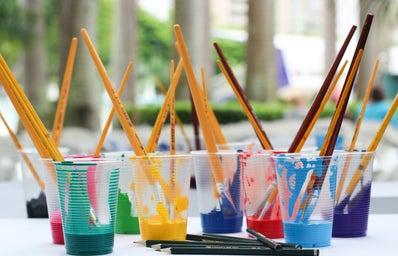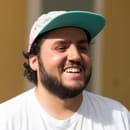With the internet being so easy to access, it has become easier for independent artists to find an audience and let their work be known. As a result, a variety of movements, collectives, and scenes have found a way to pave their path. The independent art scene in Puerto Rico is no different. Recently, many artists from a variety of disciplines have found platforms that have made it easier for them to share their work. In addition, small businesses such as Electroshock in Santurce and Rio Piedras, bars like Off The Wall in Mayaguez, book stores like La Casita Books and Gifts in Aguadilla, Libros AC in Santurce and Libros 787 online, and independent festivals like Feria de Libros Independientes y Alternativos and Tintero: Festival de Cómics y Arte Independiente de Puerto Rico have provided up-and-coming artists a space to display their talents. “Puerto Rican Women Killing It in the Independent Art Scene” is a series of interviews that provides a glimpse at some of the women who have recently gained recognition in the art scene. Though the artists are asked similar questions, some are asked queries surrounding their work, specifically.
What’s your name and what do you do in the arts?
I’m Elaine Torres, I was born in San Juan, Puerto Rico and grew up in Bayamón. I currently work as a freelance editorial and portrait photographer in Los Angeles, CA. I went to college in Puerto Rico and finished a BBA in Accounting. I really didn’t have any interest in pursuing a career like this since I’ve always been the creative one in my family. Sadly, art is not considered a prominent career in Puerto Rico, so I thought Business Administration was the way to go. My mother was a single mom raising 4 girls, so naturally I wanted to help her, and thought (in my teenage mind) a career in Finance would do that. I finally decided to pursue photography as a career and moved to LA in 2012. I finished,my Masters in Art for Commerce Photography (Academy of Art University, San Francisco) and decided to jump into the freelance journey full time. I started photographing editorial portraits and lifestyle work first and eventually decided to focus in creative editorial and portrait photography.
What got you into photography?
I discovered photography around middle school. I was into painting back then, but even though I liked it, I didn’t have the patience to sit down and spend the hours and/or days needed to create. I think what attracted me to photography was the fact that I could “paint” a scene in a matter or minutes. My mind is always going really fast, so I needed a medium that could keep up with it.
Human interaction is also a vital reason why I love photography. Capturing people’s souls, and culture in a unique way is always important to me.
How did you develop your style?
I tried a little bit of everything in terms of photography styles when I graduated from art
school, but there was something about color, minimalism and unordinary concepts that really attracted my eyes constantly. I realized that I was often drawn to organized colors and minimal but strategic compositions. I found passion in color and the opportunity that light gives to add color and “paint” forms in the studio. It’s funny, because I don’t have a single piece of clothing with color in my closet. I guess I have to balance out the craziness in my mind somehow.
How has it evolved through the years?
I would say that my work has evolved in maturity and quality. At the beginning, I felt that my work was too safe. Very basic composition, not very relevant to what was happening in society and too commercial. If not worked well, color can be seen as “quirky” and “fun” and that’s exactly what I didn’t want my work to become. I love color, but I like to work with it in a more artistic and serious way. My work is also more relevant to what’s happening now a days. I shoot a lot of people from the LGBTQ community (which I love to work with because they are just magical), I started my personal project called #TheyThemUs, which is a series showcasing non-binary and trans folks to normalize their existence, and I also represent female empowerment as much as I can.
What are some of your influences and inspirations?
Human emotion and the way our mind works has always been a muse ever since I started experimenting with more abstracts lighting. I guess I’ve always been drawn to the odd, the different and the uniqueness of people. I also believe that emotions and human energy can be represented by color, and this is why its such a vital part of my work.
My culture also has a big impact on the way I see and create art. Puerto Ricans are very colorful, emotionally driven and generally positive about life. Our cultural mix and our positive and negative parts of our history has given us the opportunity to create such unique and beautiful art.
Is there any other form of art you wish to pursue? If so, what field and why?
I think if I wasn’t doing photography I would be building sets for film or photo productions. I do build my own sets out of necessity and had built creative sets for clients, but it takes time and resources to really get invested in it. I currently admire the set designs and work of Adi Goodrich. Her bold and abstract designs are amazing. I think that building my own little spaces has always resonated with me.
What do you think about the current state of the arts in Puerto Rico?
My hope for Puerto Rico was always a space where an economically sustainable life by the arts could be developed. This is coming true, more and more through the years by so many initiatives of young artists and entrepreneurs, but there’s still a lot of work to be done. In the current situation of the Island, the arts have been tossed aside. For example, art classes are no longer a fundamental piece in education, like it was in a certain time. Nevertheless, the creativity and idea development that the arts teach you, possess the potential to impulse more local businesses and help the country’s economy overall.
Apart from the artistic, I think that through the years we have lost our cultural identity due to the American influence. Usually more importance is given to foreign things, rather than local. That mentality has affected how we see each other and our socioeconomic system. I think that the reason behind why most of the local entrepreneurs eventually fail, after jumping inside the market with big goals and optimism, is that they don’t have enough space to grow nor count with the support of the local public.
I’m happy to say that after hurricane Maria I noticed a big wave of support for local businesses and the arts. I just hope we keep doing this and understanding our worth as people and as a country.
What do you think about the current state of the independent scene in Puerto Rico?
Well, I can only speak about the photography scene and I can’t really answer in depth since I’m currently not working there. But in general, I do have a lot of friends that after hurricane Maria hit, they experienced a negative blow in their businesses as expected. Many where faced with the question of whether it was worth to stay or to leave. Some decided it was best to develop their careers elsewhere, but it was a surprise to me when I learned that the majority of my freelance friends decided to stay despite the situation. They re-analyzed their careers and changed their strategies for their work to stay relevant even when there wasn’t any commissions for a while. It was hard for them because the photography industry in Puerto Rico wasn’t the best to begin with (conversation for another time haha). But with a lot of sacrifice and patience, they still made it work and are still successfully working independently full time or part time in Puerto Rico. Even though the scene survived, I still wish there where more initiatives created to support the freelance photographer in Puerto Rico, like there was for the independent music scene and the arts.
If a young girl came up to you and said she wanted to be an artist, what would be your advice for her?
The worst thing you can do is to compare your journey to the journey of other people. Our lives and circumstances are different from everyone else’s and we are successful when we create something good for ourselves with our lives and regardless of our circumstances. Always appreciate every victory small or big, and welcome failure as part of the process. Allow yourself to take a mental break, then try again, always try again.
What is your biggest goal right now?
This is always a hard question to answer since we never really know what our definitive goal is. Our goals always change through the years, and even though we have reached so many of them already, it always feels like we haven’t because we keep adding new ones over and over again. I’m not really sure what my biggest goal is right now. I just want to keep doing what I love, keep creating quality work that resonates with people and inspire others to do the same.
What do you seek to achieve with work?
I just want to keep beating the odds to inspire other women. When I book a big campaign, when I get featured in a big photo platform or get more sponsors, I’m always beating the odds. Almost no young Hispanic women reaches these types of goals. So for me it’s super important to use my work and career to influence others and show them it is possible to be young and a woman and work in a highly technical, strategic and demanding career.
All of the pictures in this article were provided by Elaine Torres


